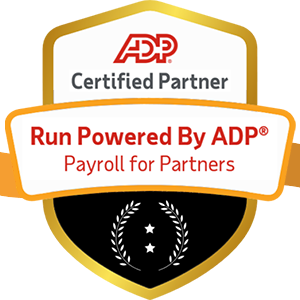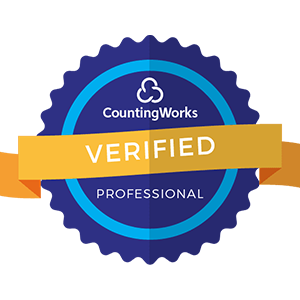In today's fast-paced, technology-driven world, the workplace is undergoing a constant metamorphosis. As companies adapt to stay competitive, employees often find themselves grappling with the fear of becoming obsolete. This article delves into the heart of this issue, exploring strategies to address employee fears and foster a culture of resilience and adaptability in the face of rapid change.
The Specter of Obsolescence:
The fear of becoming obsolete is a pervasive concern among employees across industries. As automation, artificial intelligence, and other disruptive technologies reshape the workplace, workers worry that their skills and expertise may no longer be relevant. This fear can lead to reduced job satisfaction, diminished productivity, and a general sense of unease.
Understanding the Root of Employee Fears:

To effectively address employee fears, it's crucial to understand their origins. Some common factors contributing to the fear of obsolescence include:
- Rapid technological advancements: The breakneck pace of technological innovation can leave employees feeling like they're perpetually playing catch-up.
- Shifting job requirements: As companies evolve, the skills and knowledge required for certain roles may change, leaving some employees feeling ill-equipped.
- Generational differences: With multiple generations in the workforce, older employees may fear being replaced by younger, more tech-savvy colleagues.
- Economic uncertainties: Fluctuations in the economy and the specter of downsizing can amplify fears of job loss.
Empowering Employees Through Continuous Learning:
One of the most effective ways to combat the fear of obsolescence is by fostering a culture of continuous learning. When employees are encouraged to expand their skill sets and stay abreast of industry trends, they feel more confident in their ability to adapt to change. Consider the following strategies:
- Offer training and development programs: Invest in your employees by providing access to workshops, seminars, and online courses that help them acquire new skills and knowledge.
- Encourage cross-functional collaboration: Promote opportunities for employees to work with colleagues from different departments, allowing them to gain exposure to various aspects of the business.
- Implement mentorship programs: Pair experienced employees with newer team members to facilitate knowledge sharing and foster a sense of camaraderie.
- Celebrate learning milestones: Recognize and reward employees who actively engage in continuous learning, reinforcing the value of personal and professional growth.
Transparent Communication is Key:
Open and honest communication is essential in addressing employee fears. When companies are transparent about their vision, challenges, and strategies for navigating change, employees feel more secure and invested in the organization's future. Consider the following communication strategies:
- Regular updates from leadership: Schedule regular town hall meetings or video updates where executives share the company's goals, challenges, and successes.
- Encourage two-way feedback: Create channels for employees to voice their concerns, ask questions, and offer suggestions. Actively listen and respond to their input.
- Clarify the "why" behind changes: When implementing new technologies or processes, clearly communicate the rationale behind these decisions and how they align with the company's long-term objectives.
- Celebrate successes: Highlight instances where employees have successfully adapted to change, showcasing the positive outcomes of embracing new ways of working.
Fostering a Culture of Innovation:

Creating a workplace culture that values innovation can help alleviate fears of obsolescence. When employees are encouraged to think creatively, experiment with new ideas, and challenge the status quo, they feel empowered to shape their own futures. Consider the following strategies:
- Encourage calculated risk-taking: Provide a safe space for employees to propose and test innovative solutions, even if they don't always succeed.
- Celebrate failures as learning opportunities: Reframe failures as valuable lessons that contribute to personal and organizational growth.
- Implement idea-sharing platforms: Create digital spaces where employees can share ideas, collaborate on projects, and provide feedback to one another.
- Recognize and reward innovative thinking: Celebrate employees who bring fresh perspectives and creative solutions to the table, reinforcing the value of innovation.
The Power of Upskilling and Reskilling:
In a rapidly changing workplace, the ability to acquire new skills and adapt to new roles is invaluable. By investing in upskilling and reskilling initiatives, companies can help employees stay relevant and confident in their abilities. Consider the following approaches:
- Identify skill gaps: Conduct a thorough analysis of your organization's current and future skill requirements, identifying areas where employees may need additional training.
- Offer targeted training programs: Develop training initiatives that specifically address the identified skill gaps, equipping employees with the knowledge they need to succeed.
- Encourage lateral moves: Provide opportunities for employees to explore different roles within the organization, allowing them to expand their skill sets and discover new passions.
- Partner with educational institutions: Collaborate with universities, colleges, or vocational schools to offer employees access to specialized courses or degree programs.
The Importance of Work-Life Balance:

In times of rapid change, it's easy for employees to feel overwhelmed and burnt out. By prioritizing work-life balance, companies can help alleviate stress and foster a more resilient workforce. Consider the following strategies:
- Encourage time off: Ensure that employees take their allotted vacation days and discourage the glorification of overwork.
- Offer flexible work arrangements: Implement policies that allow for remote work, flexible hours, or compressed workweeks, giving employees more control over their schedules.
- Promote mental health resources: Provide access to employee assistance programs, mindfulness workshops, or stress management seminars to support employees' emotional well-being.
- Lead by example: Encourage managers and executives to model healthy work-life balance, setting the tone for the entire organization.
Conclusion:
In a rapidly changing workplace, the fear of becoming obsolete is a genuine concern for many employees. By understanding the root of these fears and implementing strategies to empower, communicate with, and support employees, companies can create a culture of resilience and adaptability. Through continuous learning, transparent communication, a focus on innovation, upskilling and reskilling initiatives, and a commitment to work-life balance, organizations can help their employees navigate the winds of change with confidence and optimism.






